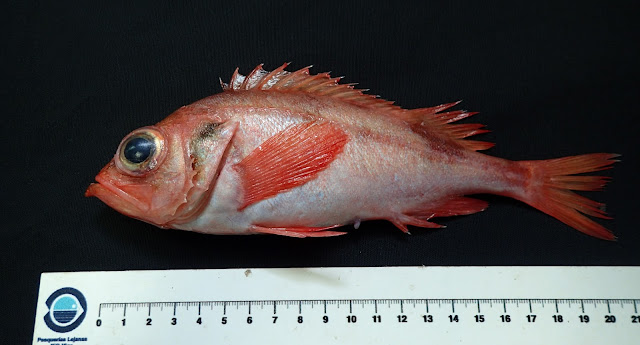Good afternoon, Earthlings. We hope you are
having a good weekend. We
do not get bored even though the ham is nearly gone, a memory rather than a
reality and does not make sense to go there to kill time.
Yesterday was a day of homogeneous hauls, and except for the redfish hauls, scarce on top of it. We took a deep water haul where we caught about 100 kg of Greenland halibut and from there we moved to shallower waters. In short, a Greenland halibut haul, two redfish hauls, a cod haul, a nearly empty haul and two hauls with some yellowtail flounder and American plaice.
 |
| We are always ready. |
All this with the feeling of being in limbo. We've been in thick fog for two days, so thick that not even the seabirds can find us. It is like being alone in the Universe. This morning the cruise ship Queen Mary 2 passed by, but the VI fleet could have passed before our noses at noon and we would not have seen her. The sailors go out on deck, and straight away their oilskins are wet. Today we also had a downpour. We live in a gray world. We only need now Galician band Siniestro Total singing "Miña terra galega" – the Galician version of “Sweet home Alabama”.
 |
| No kidding with Greenland halibut either. |
 |
| And a beautiful and spiny redfish (Sebastes fasciatus) |
Fergus has almost finished his sampling and can now go home. Javier would like to go home to watch the football match this afternoon. I do not want to think about it. I think I'm going to flee the bridge.
Today I wanted to show you this pretty fish called Gaidropsarus ensis, threadfin rockling. We do not known much about its biology. It likes cold water and is found down to 1600 m. We have caught it at about 1000 m. They use the barbels to browse the seabed while looking for food. The elongations of the pelvic fins are very characteristic, and now that I write this I realize that the most peculiar feature, a long single ray behind its head, does not appear in the photo. The problem is that the fish went overboard hours ago. These are the problems of live broadcasting. Too bad I cannot sit down and write and take the pictures in one go, rather than working on this at 30 and 60 minutes intervals, which is the time it takes shooting cable, or reaching the next sampling station.
 |
| Threadfin rockling hiding its main feature. |
In the same haul came this beautiful anemone about which I have barely found information, just a few ancient records. Anemones live attached to their chosen surface with their basal disk but they can move slowly. At the other end there is the oral disc, surrounded by tentacles. Anemones have cnidocists, like jellyfish. They are specialized cells that contain neurotoxins, responsible for the burns we get when we accidentally cross paths with jellyfish. The clownfish and damsel fish have developed immunity to these toxins, thus they can live among their tentacles with total impunity.
 |
| Actinernus nobilis, Teo says. |
And this is going to be it for today. Tomorrow will be another day and we will tell you more things.
No hay comentarios:
Publicar un comentario